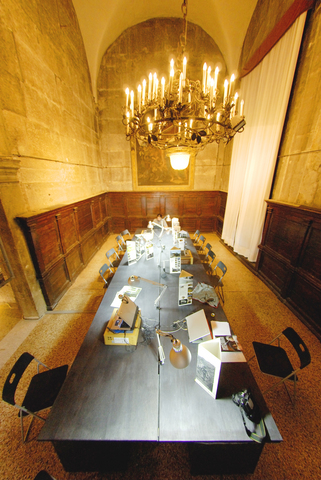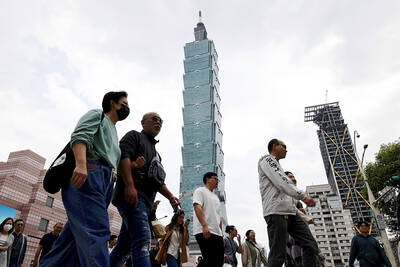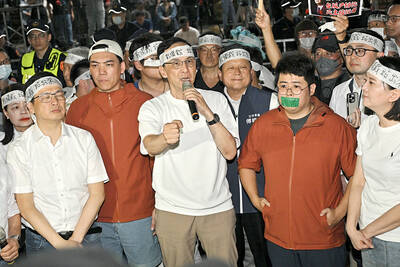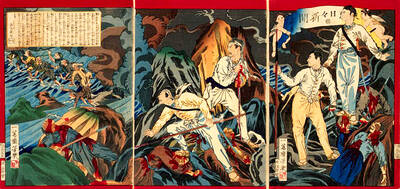If you expect architecture biennales to be filled with lots of boring wall texts and models, think again. The Taiwan Pavilion (housed in the prison near the famous Bridge of Sighs) at this year’s Venice Biennale, curated by Roan Ching-yueh (阮慶岳), the assembled installations show that the world of architecture is rapidly changing with people realizing we must tend to our small gardens rather than impose heroic monoliths in city centers. So instead of showing grandiose architectural schemes, Roan gathered a variety of voices that show the strength of small-scale, humanizing architecture in Taiwan.
Upon entering the Taiwan Pavilion, one encounters You Yuan (遊園), a beautiful simulation of a Chinese rock garden whose ground consists of glittery pieces of crushed glass and large stones made from recycled glass. A swing set in the corner transforms this interior prison space into a meditative garden that is entirely created from urban waste.
This installation by Helsinki-based Marco Casagrande who had taught at Tamkang University stirred some local controversy. Newspapers such as the Minsheng Daily had a field day in criticizing the choice of non-Taiwanese (ie. foreigners) to display their work in the coveted main exhibition room while Taiwanese architects were relegated to smaller rooms. It is to Roan’s credit that he recognizes that architecture in Taiwan is not limited to those with Taiwanese blood coursing through their veins. This strategy paid off as hordes of visitors including European TV crews were fascinated by this exhibition.

PHOTO COURTESY OF ROAN CHING-YUEH
Norway-based 3RW Architects showed several videos titled Urban Farmers that included interviews of people in Taiwan and Norway who are trying to eek out a living as farmers in a rapidly industrializing world.
Huang Sheng-yuan’s (黃聲遠) Field Office, a team of architects, work only 15 minutes driving distance from their office in Ilan, preferring to tend to their own backyard. For their participation in Venice, they set up benches that seem to have been plunked down in a rice paddy, so that viewers can contemplate life in a small town agricultural society.
Socially-minded architect Hsieh Ying-chun (謝英俊) lives and works in Nantou, Taiwan and China. His new project called Sustainable Construction links society with the economy and the environment. As he was in China helping farmers build their own homes, he was discussed his ongoing project with visitors via a video link.
In Timescapes, young Tainan-based architect Liu Kuo-Chang (劉國滄) uses suspended hand-made rocks to convey the sense of drifting in the ocean. If you are not able to make it to Venice, the exhibition will come to Taiwan next year.
Unfortunately politics reared its ugly head in this innocuous gathering of architects. When Roan tried to organize a panel discussion between East Asian architects, the Chinese architects said they were unfortunately unable to set foot in the Taiwan Pavilion, so when he proposed to rent out a hotel room with his own money the Taiwanese organizers threatened to pull the plug on his budget, so the discussion took place without the participation of the Chinese architects.
Politics are definitely not on view at Taipei’s Museum of Contemporary Art. Artists Today@MOCA 2006, the current exhibition of three Taiwanese artists provides a chance to see lighthearted whimsical works that please the eye and tickle the fancies.
Chen Hui-Chiao’s (陳慧嶠) Here and Now tactile installation consists of her signature use of a bed, needles and thread to create a dreamy walk-through set. Twin brothers Chang Geng-hwa and Chang Keng-hau’s Screw it! consists of toys, baby heads in bird cages, and interactive animations. The second floor is reserved for Ku Shih-yung (顧世勇), a versatile artist working in a wide range of media creating works that are guaranteed to put a smile on your face.

In the March 9 edition of the Taipei Times a piece by Ninon Godefroy ran with the headine “The quiet, gentle rhythm of Taiwan.” It started with the line “Taiwan is a small, humble place. There is no Eiffel Tower, no pyramids — no singular attraction that draws the world’s attention.” I laughed out loud at that. This was out of no disrespect for the author or the piece, which made some interesting analogies and good points about how both Din Tai Fung’s and Taiwan Semiconductor Manufacturing Co’s (TSMC, 台積電) meticulous attention to detail and quality are not quite up to

April 21 to April 27 Hsieh Er’s (謝娥) political fortunes were rising fast after she got out of jail and joined the Chinese Nationalist Party (KMT) in December 1945. Not only did she hold key positions in various committees, she was elected the only woman on the Taipei City Council and headed to Nanjing in 1946 as the sole Taiwanese female representative to the National Constituent Assembly. With the support of first lady Soong May-ling (宋美齡), she started the Taipei Women’s Association and Taiwan Provincial Women’s Association, where she

Chinese Nationalist Party (KMT) Chairman Eric Chu (朱立倫) hatched a bold plan to charge forward and seize the initiative when he held a protest in front of the Taipei City Prosecutors’ Office. Though risky, because illegal, its success would help tackle at least six problems facing both himself and the KMT. What he did not see coming was Taipei Mayor Chiang Wan-an (將萬安) tripping him up out of the gate. In spite of Chu being the most consequential and successful KMT chairman since the early 2010s — arguably saving the party from financial ruin and restoring its electoral viability —

It is one of the more remarkable facts of Taiwan history that it was never occupied or claimed by any of the numerous kingdoms of southern China — Han or otherwise — that lay just across the water from it. None of their brilliant ministers ever discovered that Taiwan was a “core interest” of the state whose annexation was “inevitable.” As Paul Kua notes in an excellent monograph laying out how the Portuguese gave Taiwan the name “Formosa,” the first Europeans to express an interest in occupying Taiwan were the Spanish. Tonio Andrade in his seminal work, How Taiwan Became Chinese,